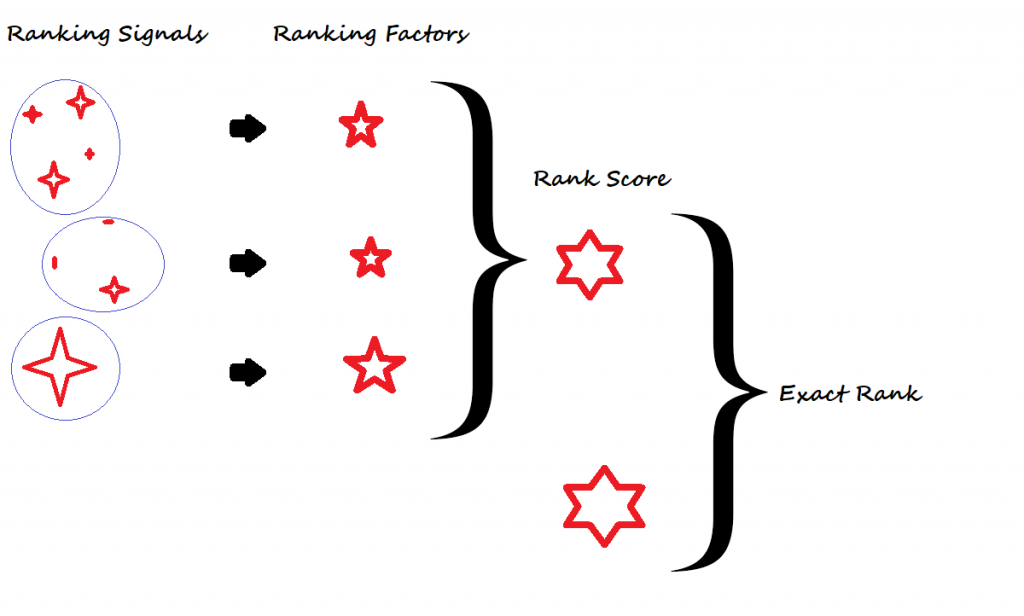- April 3, 2019
- by Diet SEO India
- SEO
- 0 Comments
Search Engines use numerous signals to rank webpages. Google is known to use over 200 of them. Ever wondered how a Search Engine is able to create one rank based on so many signals? It’s actually quite simple; read on to learn.
First, you need to understand what a ranking signal is. When Google says that Content and RankBrain are among the top contributors to the ranking process, it DOES NOT imply that they are ranking signals. Why? Because they aren’t simple signals but are instead a complex combination of a lot of other signals. So, for our convenience, let us first define a few terms:
‘Rank’ refers to the position of the page in consideration in the search results on the given search engine for the given keyword. It may be different when seen on different search engines, and on the same search engine, too, it may vary with time.
‘Ranking Signal’ refers to any indicator of the page’s performance. The presence of relevant keywords, for instance, is a ranking signal. Ranking Signals have two types of strengths – relative and absolute. When the signal is absolutely strong, it means the performance of the page w.r.t that signal is good. When the signal is relatively strong, it means the performance of the page due to this signal is better than its performance due to other signal(s).
Ranking Signals that are close to each other together create a ‘Ranking Factor’. For example, mere presence of the exact match keyword does not guarantee a good rank; what we need is the presence of the keyword as well as relevant content and sufficient frequency of relevant terms including the keyword at the right positions. When all of these are met, the page-content is said to be keyword-optimized, and ‘keywords on the page’ thus becomes a ranking factor. As they are combinations of Ranking Signals, Ranking Factors too have relative and absolute strengths, and the strengths are quantified using scores.
If you’re still not so comfortable with our definitions, here’s an image for you:

In the above image, the score for each signal is represented by the size of the star. The scores of ranking signals, after taking into consideration their relative strengths, are used to calculate the score of each of their clusters. These become the scores of ranking factors. Then, the individual scores of ranking factors, after taking into consideration the relative strengths of the factors, are used to calculate the Rank Score. For a given keyword at a given time, each page can have only one rank score. When rank scores of different pages are arranged in descending order, we get the SERP ranks of the individual pages.
In a simple model, the ranking signals would directly be deciding the ranking factors. However, our case studies have shown that this is not the case; that there is indeed at least one more level, which we have termed as ranking factors as they directly influence the ranking. In our next blog, we’ll show a working example of how these signals work, as well as why it works despite appearing to be different from the mainstream ranking models that you have seen.



